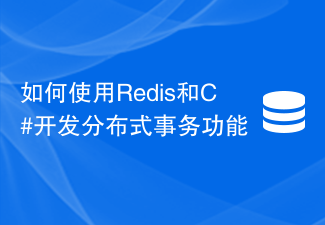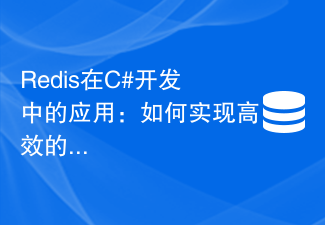 Backend Development
Backend Development C#.Net Tutorial
C#.Net Tutorial C# basic knowledge compilation Basic knowledge (18) Boxing and unboxing of value types (1)
C# basic knowledge compilation Basic knowledge (18) Boxing and unboxing of value types (1)It is actually very interesting to learn more about boxing and unboxing. First, let’s look at why boxing and unboxing occur?
Look at the following code:
class Program
{
static void Main(string[] args)
{
ArrayList array = new ArrayList();
Point p;//分配一个
for (int i = 0; i < 5; i++)
{
p.x = i;//初始化值
p.y = i;
array.Add(p);//装箱
}
}
}
public struct Point
{
public Int32 x;
public Int32 y;
} Loop 5 times, initialize a Point value type field each time, and then put it into the ArrayList. Struct is a value type structure, so what is stored in ArrayList? Let's take another look at the Add method of ArrayList. You can see the Add method in MSDN:
public virtual int Add(Object value),
You can see that the parameter of Add is of type Object, that is, the parameter it requires is a reference to an object. That is to say, the parameters here must be reference types. As for what a reference type is, there is no need to elaborate. It is nothing more than a reference to an object on the heap. However, for the convenience of understanding, let’s talk about heap and stack again.
1. Stack area (stack) - automatically allocated and released by the compiler, storing function parameter values, local variable values, etc.
2. Heap area (heap) - allocated and released by the programmer. If the programmer does not release it, it may be recycled by the OS when the program ends.
For example:
class Program
{
static void Main(string[] args)
{
Int32 n;//这是值类型,存放在栈中,Int32初始值为0
A a;//此时在栈中开辟了空间
a = new A();//真正实例化后的一个对象则保存在堆中。
}
}
public class A
{
public A() { }
}Going back to the above question, the Add method requires reference type parameters, what should I do? Then you need to use boxing. The so-called boxing is to convert a value type into a reference type. The conversion process is as follows:
1. Allocate memory in the managed heap. The amount of memory allocated is the amount of memory required by the individual fields of the value type plus the amount of memory required by two additional members (the type object pointer and the synchronized block index) that all objects in the managed heap have.
2. Copy the value type fields to the newly allocated memory.
3. Return the address of the object. At this point, the address is a reference to an object, and the value type has now been converted to a reference type.
In this way, in the Add method, a reference to a boxed Point object is saved. The boxed object will remain in the heap until the programmer handles it or the system garbage collects it. At this point, the lifetime of the boxed value type exceeds the lifetime of the unboxed value type.
With the above boxing, it is natural to unbox it. If you want to take out the 0th element of the array:
Point p = (Point)array[0];
What you need to do here is to get The reference of element 0 of ArrayList is put into Point value type p. In order to achieve this goal, how to implement it? First, obtain the address of each Point field of the boxed Point object. That’s it for unboxing. The values contained in these fields are then copied from the heap into the stack-based value type instance. Unboxing is essentially the process of obtaining a reference to a primitive value type contained in an object. In fact, the reference points to the unboxed part of the boxed instance. Therefore, unlike boxing, unboxing does not require copying any bytes in memory. But there is another point, a field copy operation occurs immediately after unboxing.
Therefore, boxing and unboxing will have an adverse impact on the speed and memory consumption of the program, so pay attention to when the program will automatically perform boxing/unboxing operations, and try to avoid these situations when writing code.
When unboxing, pay attention to the following exceptions:
1. If the variable containing "a reference to the boxed value type instance" is null, a NullReferenceException will be thrown.
2. If the object pointed to by the reference is not a boxed instance of the expected value type, an InvalidCastException will be thrown.
For example, the following code snippet:
Int32 x = 5;
Object o = x;
Int16 r = (Int16)o;//抛出InvalidCastException异常Because it can only be converted to the original unboxed value type when unboxing. Modify the above code to:
Int32 x = 5;
Object o = x;
//Int16 r = (Int16)o;//抛出InvalidCastException异常
Int16 r = (Int16)(Int32)o;This is correct.
After unboxing, a field copy will occur, as shown in the following code:
//会发生字段复制
Point p1;
p1.x = 1;
p1.y = 2;
Object o = p1;//装箱,发生复制
p1 = (Point)o;//拆箱,并将字段从已装箱的实例复制到栈中Look at the following code segment again:
//要改变已装箱的值
Point p2;
p2.x = 10;
p2.y = 20;
Object o = p2;//装箱
p2 = (Point)o;//拆箱
p2.x = 40;//改变栈中变量的值
o = p2;//再一次装箱,o引用新的已装箱实例The purpose here is to copy the x of p2 after boxing The value is changed to 40. In this way, you need to unbox once, copy the field to the stack once, change the value of the field in the stack, and then perform boxing once. At this time, you need to create a new boxed box on the heap. Example. From this we also see the impact of boxing/unboxing and copying on program performance.
Let’s look at a few more boxing and unboxing code snippets:
//装箱拆箱演示
Int32 v = 5;
Object o = v;
v = 123;
Console.WriteLine(v + "," + (Int32)o);Three boxings occurred here, and it can be clearly seen that
Object o = v;
v = 123; But in Console.WriteLine Packing also happened once, why? Because there are string type parameters in WriteLine here, and everyone knows that string is a reference type, so (Int32)o needs to be boxed here. Here again, the problem of using the + sign to connect strings in the program is explained. If there are several value types during the connection, several boxing operations will be performed.
However, the above code can be modified:
//修改后
Console.WriteLine(v.ToString() + "," + o);This way there is no boxing.
Look at the following code again:
Int32 v = 5;
Object o = v;
v = 123;
Console.WriteLine(v);
v = (Int32)o;
Console.WriteLine(v);Only one boxing occurs here, that is, Object o = v here, and Console.WriteLine does not happen here because it overloads int, bool, double, etc. Packing.
The above is the content of the basic knowledge of C# Basic knowledge (18) Boxing and unboxing of value types (1). For more related content, please pay attention to the PHP Chinese website (www.php.cn)!
 如何使用C#编写时间序列预测算法Sep 19, 2023 pm 02:33 PM
如何使用C#编写时间序列预测算法Sep 19, 2023 pm 02:33 PM如何使用C#编写时间序列预测算法时间序列预测是一种通过分析过去的数据来预测未来数据趋势的方法。它在很多领域,如金融、销售和天气预报中有广泛的应用。在本文中,我们将介绍如何使用C#编写时间序列预测算法,并附上具体的代码示例。数据准备在进行时间序列预测之前,首先需要准备好数据。一般来说,时间序列数据应该具有足够的长度,并且是按照时间顺序排列的。你可以从数据库或者
 如何使用Redis和C#开发分布式事务功能Sep 21, 2023 pm 02:55 PM
如何使用Redis和C#开发分布式事务功能Sep 21, 2023 pm 02:55 PM如何使用Redis和C#开发分布式事务功能引言分布式系统的开发中,事务处理是一项非常重要的功能。事务处理能够保证在分布式系统中的一系列操作要么全部成功,要么全部回滚。Redis是一种高性能的键值存储数据库,而C#是一种广泛应用于开发分布式系统的编程语言。本文将介绍如何使用Redis和C#来实现分布式事务功能,并提供具体代码示例。I.Redis事务Redis
 如何实现C#中的人脸识别算法Sep 19, 2023 am 08:57 AM
如何实现C#中的人脸识别算法Sep 19, 2023 am 08:57 AM如何实现C#中的人脸识别算法人脸识别算法是计算机视觉领域中的一个重要研究方向,它可以用于识别和验证人脸,广泛应用于安全监控、人脸支付、人脸解锁等领域。在本文中,我们将介绍如何使用C#来实现人脸识别算法,并提供具体的代码示例。实现人脸识别算法的第一步是获取图像数据。在C#中,我们可以使用EmguCV库(OpenCV的C#封装)来处理图像。首先,我们需要在项目
 Redis在C#开发中的应用:如何实现高效的缓存更新Jul 30, 2023 am 09:46 AM
Redis在C#开发中的应用:如何实现高效的缓存更新Jul 30, 2023 am 09:46 AMRedis在C#开发中的应用:如何实现高效的缓存更新引言:在Web开发中,缓存是提高系统性能的常用手段之一。而Redis作为一款高性能的Key-Value存储系统,能够提供快速的缓存操作,为我们的应用带来了不少便利。本文将介绍如何在C#开发中使用Redis,实现高效的缓存更新。Redis的安装与配置在开始之前,我们需要先安装Redis并进行相应的配置。你可以
 如何使用C#编写动态规划算法Sep 20, 2023 pm 04:03 PM
如何使用C#编写动态规划算法Sep 20, 2023 pm 04:03 PM如何使用C#编写动态规划算法摘要:动态规划是求解最优化问题的一种常用算法,适用于多种场景。本文将介绍如何使用C#编写动态规划算法,并提供具体的代码示例。一、什么是动态规划算法动态规划(DynamicProgramming,简称DP)是一种用来求解具有重叠子问题和最优子结构性质的问题的算法思想。动态规划将问题分解成若干个子问题来求解,通过记录每个子问题的解,
 如何实现C#中的图像压缩算法Sep 19, 2023 pm 02:12 PM
如何实现C#中的图像压缩算法Sep 19, 2023 pm 02:12 PM如何实现C#中的图像压缩算法摘要:图像压缩是图像处理领域中的一个重要研究方向,本文将介绍在C#中实现图像压缩的算法,并给出相应的代码示例。引言:随着数字图像的广泛应用,图像压缩成为了图像处理中的重要环节。压缩能够减小存储空间和传输带宽,并能提高图像处理的效率。在C#语言中,我们可以通过使用各种图像压缩算法来实现对图像的压缩。本文将介绍两种常见的图像压缩算法:
 C#开发中如何处理跨域请求和安全性问题Oct 08, 2023 pm 09:21 PM
C#开发中如何处理跨域请求和安全性问题Oct 08, 2023 pm 09:21 PMC#开发中如何处理跨域请求和安全性问题在现代的网络应用开发中,跨域请求和安全性问题是开发人员经常面临的挑战。为了提供更好的用户体验和功能,应用程序经常需要与其他域或服务器进行交互。然而,浏览器的同源策略导致了这些跨域请求被阻止,因此需要采取一些措施来处理跨域请求。同时,为了保证数据的安全性,开发人员还需要考虑一些安全性问题。本文将探讨C#开发中如何处理跨域请
 如何实现C#中的遗传算法Sep 19, 2023 pm 01:07 PM
如何实现C#中的遗传算法Sep 19, 2023 pm 01:07 PM如何在C#中实现遗传算法引言:遗传算法是一种模拟自然选择和基因遗传机制的优化算法,其主要思想是通过模拟生物进化的过程来搜索最优解。在计算机科学领域,遗传算法被广泛应用于优化问题的解决,例如机器学习、参数优化、组合优化等。本文将介绍如何在C#中实现遗传算法,并提供具体的代码示例。一、遗传算法的基本原理遗传算法通过使用编码表示解空间中的候选解,并利用选择、交叉和


Hot AI Tools

Undresser.AI Undress
AI-powered app for creating realistic nude photos

AI Clothes Remover
Online AI tool for removing clothes from photos.

Undress AI Tool
Undress images for free

Clothoff.io
AI clothes remover

AI Hentai Generator
Generate AI Hentai for free.

Hot Article

Hot Tools

SAP NetWeaver Server Adapter for Eclipse
Integrate Eclipse with SAP NetWeaver application server.

Dreamweaver Mac version
Visual web development tools

ZendStudio 13.5.1 Mac
Powerful PHP integrated development environment

Atom editor mac version download
The most popular open source editor

SublimeText3 Linux new version
SublimeText3 Linux latest version





